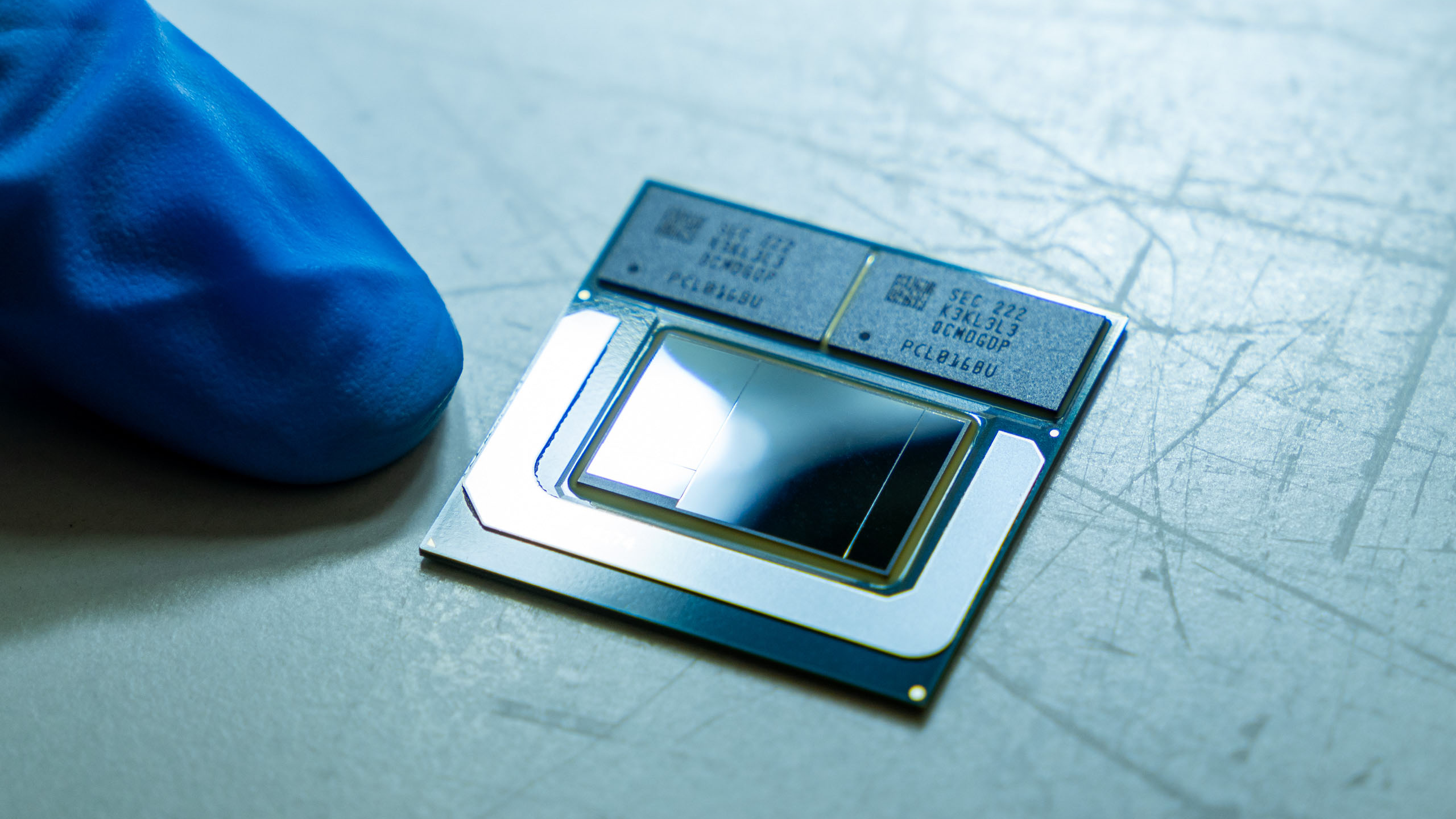Intel is cutting it fine with Meteor Lake. But it looks like it will just—just—make its self-imposed schedule for pushing its new 4nm CPU out the door before the end of the year. The new Core Ultra, the CPU formerly known as Meteor Lake, will be launched on December 14th during an event Intel is calling “AI Everywhere” and that will also big up Intel’s AI prowess “across the data center, the cloud and the edge”. Huzzah!
We know quite a bit about Meteor Lake thanks to various briefings from Intel, including the fact it’s essentially a mobile-only CPU and won’t be coming to desktop PC sockets. But December 14th will be when the final details emerge including initial CPU models in what Intel might be calling its 14th Gen mobile CPU family, though maybe not. Who knows what Intel’s marketing department is up to after switching to Core Ultra.
Overall, the chip is a mix of revolutionary and more modest elements. The two big changes are at the higher structural level, with some of the finer architectural details less dramatic.
So, the first biggie is that Meteor Lake is a chiplet design with four what you might call feature dies, or tiles in Intel parlance, sitting atop a fifth slice of silicon that connects them all together. So, there’s the compute tile with the CPU cores, a graphics tile, an SoC tile with the media engine, memory controller, AI cores and a few other bits and pieces, an IO tile with Thunderbolt, PCIe and the rest, and then that base tile underneath them all.
The other big news is that the compute tile will represent the first commercially available silicon built on the Intel 4 process, which would now be classed as a 4nm node, but was previously known as 7nm in Intel’s roadmaps of old.
(Image credit: Intel)
Oddly, the other three feature tiles are all made by TSMC, with the graphics tile on TSMC’s 5nm node and the other two on some unspecified TSMC node but likely either 5nm or 6nm.
Arguably, this is a slightly odd scenario. The narrative around Intel is that it has been struggling to move to more advanced nodes. So you could understand if Intel went to TSMC to have the CPU cores and perhaps the graphics tile made while not having any problem producing the less performance sensitive SoC and IO tiles on one of its own legacy nodes.
But no, Intel is pushing the boat out on Intel 4 with the CPU tile and having the SoC and IO tiles built on a legacy TSMC node, with the graphics tile on TSMC 5nm easier to understand.
Anyway, on the architecture detail side, Meteor Lake’s CPU cores are not expected to be a huge leap over those in Raptor Lake. But there is novelty in that Intel has squeezed a couple of Efficient cores into the SoC tile, into a section of the chip known as the Low Power Island.
It essentially means the CPU tile can power down in low-demand scenarios for what Intel claims is a substantial power saving.
(Image credit: Future)
Best gaming PC: The top pre-built machines.
Best gaming laptop: Great devices for mobile gaming.
The final element of note is the GPU tile. Intel has been bigging up the capabilities of the new iGPU in Meteor Lake, claiming that it’s twice as fast as Intel’s previous integrated graphics and not far off the performance of an Nvidia RTX 3050.
If true, that’s actually pretty impressive and will mean the chip has better graphics performance than the AMD 780M iGPU in is Phoenix APU, as used by handheld’s including the Asus ROG Ally.
Let’s just say we’ll believe that when we see it. Anywho, the cynical might suggest this announcement has an air of very slight desperation. Intel has made some very big promises regarding releasing a slew of new process nodes in a very tight timeframe and the need to get Meteor Lake and its Intel 4 CPU cores launched this year in order to keep things even remotely on track is very real.
For sure, it will be interesting to see if the December event is followed by immediate widespread availability of Meteor Lake laptops or if the new Core Ultra chips take a while to actually land in devices you can actually buy. I would expect we won’t see actual Meteor Lake laptops until 2024.











